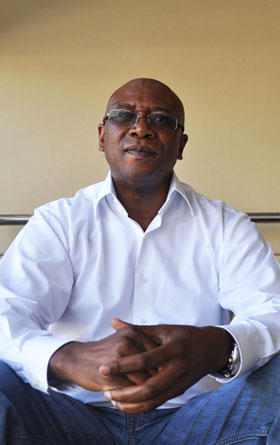
The Brics Cable, a superfast broadband submarine network that will extend from the east of Russia to the US via SA, and which will cost as much as US$1,5bn to construct, is already at an advanced stage of planning and should be ready by mid to late 2014, according to Andrew Mthembu, the SA businessman behind the project.
The 12,8Tbit/s system will be the first contiguous submarine cable linking all of the so-called Brics nations (Brazil, Russia, India, China and SA) and a supply and construction agreement could be signed for the project as early as this year.
The Brics Cable will extend from Vladivostok in Russia, south through China and on to Singapore. A spur will be built to India, with the main cable extending further southwestward through Mauritius, on to SA (landing north of Cape Town), across the South Atlantic to Fortaleza in Brazil and then northward to Jacksonville in the US state of Florida.
Mthembu, a former deputy group CEO at Vodacom and a former chairman of Broadband Infraco, was intimately involved in another recent submarine cable, the West African Cable System (Wacs), which will be launched officially next week at a ceremony in Cape Town. He hopes to take many of the learnings from Wacs — which was built, he says, in record time — and apply these to the Brics system.
SA, Mthembu explains, is at the forefront of the Brics Cable initiative and the project came about following suggestions at the March 2011 Brics summit in China that SA was punching above its weight as the smallest of the economies in the grouping. Questions were being asked about what value SA brought to the table. Mthembu put forward the idea of the cable system as a way of reducing reliance on links across Europe and the North Atlantic. The new system would provide a shorter, cheaper and potentially more secure route for traffic flowing between the Brics nations and the US.
Mthembu and his team contracted France’s Axiom and America’s Terabit Consulting to conduct a full feasibility study for the proposed project. They also asked Alcatel-Lucent Submarine Networks to investigate whether it made sense.
Axiom and Terabit then spent months analysing the business case, speaking to operators in the affected countries to ascertain their appetite for it as well as determining likely economic growth and conducting an analysis of likely network traffic and demand. Based on an 18-year lifespan and 20% annual price erosion, the consultants concluded the project could deliver an internal rate of return (IRR) of 24% assuming no debt was raised and an IRR of 38% with a 60-40 debt-to-equity split.
“That’s phenomenal,” Mthembu says, adding that demand will be driven to a large extent by China, which, he says, is likely to expand to become the leading destination for Internet traffic by about 2030.
“While the feasibility study was being done, I met with all the governments in the Brics countries, with their ministries of communications and foreign affairs as well as the Brics secretariats in all of these countries,” he says. “I have also been to see the individual operators and canvassed them and they have been very supportive.”
Invitations to express interest have now been issued to operators across the Brics nations and Mthembu says 60% of them have responded and not one of these responses has been negative.
To achieve its 12,8Tbit/s design capacity — that’s two-and-a-half times the capacity of Wacs — the Brics Cable will be a two-fibre-pair system using the latest 100Gbit/s per lambda optical technology. The project will cost between $1bn and $1,5bn, depending on the eventual route it takes and which countries it connects to along its 34 000km length.
The project will be based on a “consortium model”, similar to the one used for Wacs, where a dozen or so operators will provide equity financing to support it. The landing station is likely to be near to the Wacs facility at Yzerfontein north of Cape Town. It may even be located in the same building to facilitate easy interconnection with that system, Mthembu says.
A meeting will be called in the first week in June, probably either in SA or somewhere in the Middle East, to discuss the project further and to provide potential investors with a detailed plan so they can then conduct thorough due diligences of their own.
Once “tier-one” investors have signed irrevocable commitments to fund the project, a thorough route survey will be conducted and a construction and maintenance agreement drafted. This phase will probably take about six months, after which implementation will begin. If it goes quickly, there is the possibility that the cable will be ready for service in time for the 2014 soccer World Cup, though it’s more likely to come on stream only later that year, Mthembu says. — (c) 2012 NewsCentral Media




